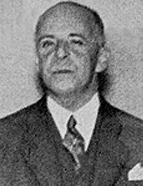

“opposition between the corporative model and the individualist model,” an idea that would later be further developed by António Manuel Hespanha (N. G. Monteiro, “Identificação da política setecentista…” [Identification of 18th-century politics...], 2001, p. 963). In addition to this innovative perspective, he emphasised an endemic characteristic that helped explain the Restoration phenomenon and Portugal's struggle for independence from its neighbouring kingdom. He argued for the existence of a deep-rooted “political sense of Portuguese life”, which organically inclined the nation toward a return to medieval systems and “traditional forms of government”. This justification, Mattos asserted, took precedence over any sense of national nostalgia or external influences — a phenomenon often misunderstood by “foreign observers” and largely “obscured for most of our historians” (G. M. Mattos, O Sentido..., 1944, p. 339). In his work we can see an undeniable influence from the English historian Edgar Prestage, with whom he corresponded. This affinity is evident through the chronological and thematic focus they shared, especially regarding figures such as the Count of Castelo Melhor and Francisco Manuel de Melo. In a 1943 letter, Prestage admitted he no longer had "enough energy to write another book on Francisco Manuel" (G. M. Mattos, "Documentos inéditos…" [Previously unpublished documents...], 1955, p. 170), appearing to subtly encourage Mattos to take on this task. Mattos indeed fulfilled this implicit suggestion, producing a preliminary study published in 1955 (Idem, “Documentos inéditos…”, 1955). Expanding his focus from 17th-century Portugal, Mattos ventured into the 18th century, focusing primarily on military, political, and diplomatic history — a field to which he made significant contributions. Notably, he prefaced and edited the Memórias da paz de Utreque [Memoirs of the peace of Utrecht] (1931) and continued with further works on Portuguese involvement in the War of the Spanish Succession (1702-1714).
The publication and transcription of sources became a hallmark of Mello de Mattos’s work, aligning with the practices prevalent in Portuguese historiography during the first half of the 20th century. Although seemingly conservative in his approach to historical practice, he managed to stand out from some of his contemporaries. The exhaustive research he conducted in national archives did not prevent him from acknowledging the risks of an excessive attachment to documentation or the danger of overvaluing the novelty of the sources (Idem, "As notas do licenciado…" [The graduate notes...], 1942, p. 95; Idem, Um soldado [A soldier], 1939, pp. 5 and 6), namely stemming from literal interpretations of official documents (Idem, O Sentido..., 1944, p. 344), showing a critical distance from the rigid methodological approach still dominant in Portugal at the time. He was particularly enthusiastic about comparing documents and correcting errors made by previous analysis, especially regarding dating, provenance, and (re)interpretation of manuscripts. Frequently, he aimed to challenge the theories of other researchers, as he did in works such as Regimento de Guerra Quinhentista [16th-Century War Regiment] (1953) or “Considerações tácticas sobre a batalha de Aljubarrota” [Tactical considerations on the battle of Aljubarrota] (1962). Although he assured readers that he had “no intention of generating controversies” (Idem, "Considerações" [Considerations…], 1962, p. 11), the proposal of this last article, however, openly contradicted Cordeiro de Sousa’s study by arguing — based on new archaeological evidence from the battlefield — that the Portuguese attack tactic was conducted on foot rather than on horseback. This debate remains alive today, with historians still revisiting and (re)examining these contrasting positions (J. G. Monteiro, Aljubarrota Revisitada, 2001, p. 239). Mello de Mattos’s most significant works stemmed from contradictions and revisionist perspectives. Notably, his entries on the significance, origin, and purpose of the Lines of Torres Vedras (G. M. Mattos, "Torres Vedras, Linhas de" [Lines of Torres Vedras], 1971, pp. 180-182); his interpretation of the Battle of Alcácer Quibir, where he argued that the expedition’s goal was to establish a protectorate in Morocco for defence against the Turks, rather than to conquer the city (Idem, "Alcácer Quibir, Batalha de" [Battle of Alcácer Quibir], 1963, pp. 919-923); and his study asserting that naval "terços" [military unit] and organised troops had been stationed permanently in Portugal since the 16th century (Idem, Notícias do terço... [News from the terço], 1932, p. 5).
This work is financed by national funds through FCT - Foundation for Science and Technology, I.P, in the scope of the projects UIDB/04311/2020 and UIDP/04311/2020.
